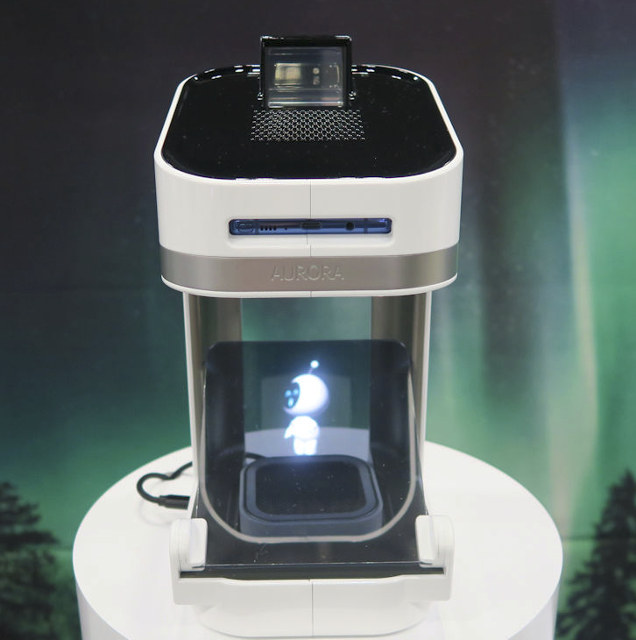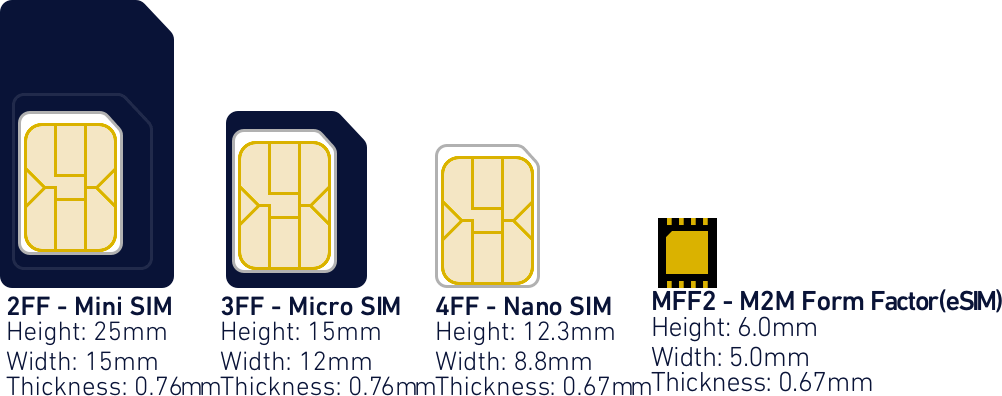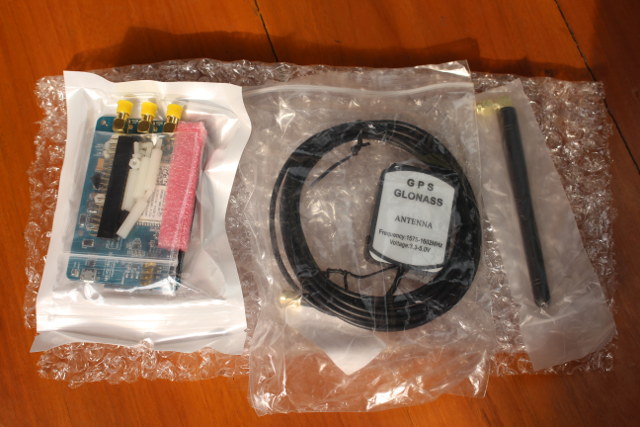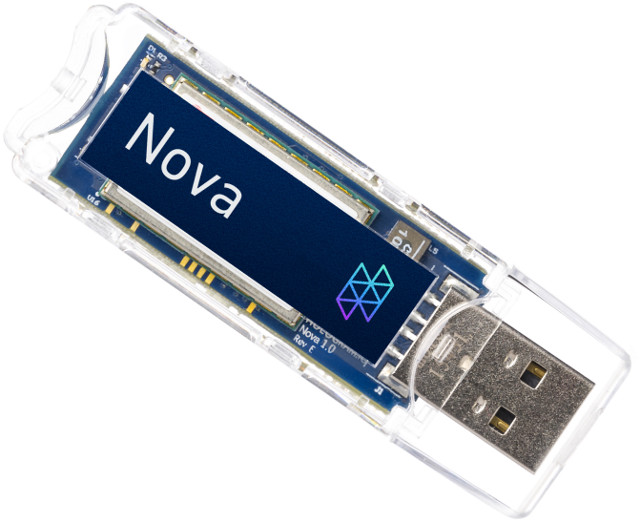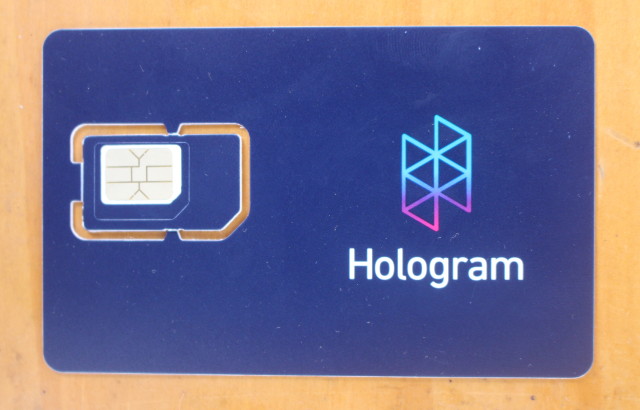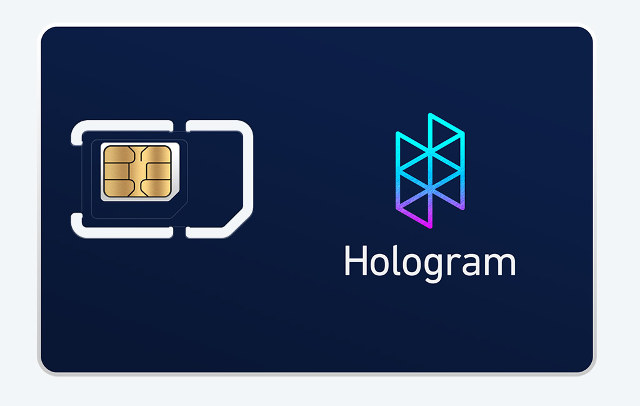Samsung Electronics has showcased a smart / A.I. speaker prototype at SXSW 2018 trade show last month, that can be manufactured at low cost since it relies on a smartphone to provide a processor, microphone, and other equipment. The smart speaker also uses the smartphone’s screen to show an hologram to greet users. Meet Samsung “Aurora”. The smartphone is placed horizontally (blue above) in a slot in the upper part of the speaker, and a hologram-like character floats above the Bluetooth speaker included of the kit. The part on the top surface is an optical mechanism using the smartphone’s camera for image recognition. The smart speaker also charges the phone, but it’s unclear how you are supposed to answer phone calls once it is inserted in the speaker… The concept looks similar to Vinclu Gatebox which we covered in 2016, except it relies on a smartphone. Samsung is said to […]
Hologram Introduces Global IoT eSIM Chip
Hologram provides a SIM card for IoT projects that can be used in most of the world, and I own a developer SIM card that’s very convenient for reviews and evaluation with 10MB free data per month, which I used for example in a recent 3G HAT board for Raspberry Pi. The company also manage network by software, so they were on of the first SIM providers to enable 4G LTE Cat M1 and NB-IoT without changing anything to the SIM card itself. Since everything is programmable, not tied to any specific service provider, the SIM card form factors may not be the most convenient, and instead for a lower form factor, and possibly better reliability Hologram eSIM based on MFF2 form factor may be a better solution for new projects. The chip measures just 6x5mm with 0.67mm thickness, and would be soldered on the board of your cellular IoT […]
How to Use 3G and GPS on Raspberry Pi with ThaiEasyElec 3G HAT Expansion Board
Venus Supply is an embedded systems company based in Bangkok, Thailand that sells products through their ThaiEasyElec website/brand, as well as a act as a local distributor for popular DIY electronics items. I previously tested their ESPino32 ESP32 board, and the company has now send me another of their new product called “3G HAT Expansion for Raspberry Pi” and based on Quectel UC20-G that support 3G and GPS/GLONASS connectivity globally, meaning it should work in any country with 2G or 3G coverage. After listing the specifications, going through unboxing and assembly with a Raspberry Pi 2/3 board, I’ll write some quick start guide to show what I had to do to use GPS and connect to 3G with a Hologram SIM card. 3G HAT Expansion for Raspberry Pi Specifications Quectel UC20-G wireless module supporting Cellular 3G – UMTS @ 800/850/900/1900/2100 MHz 2G – GSM @ 850/900/1800/1900 MHz Data – HSPA+ […]
Hologram Unveils Nova 3G USB Dongle and Python SDK; 200 Raspberry Pi Zero W Kits Given Away to Developers
This summer I discovered Hologram global cellular IoT SIM card, and since they provided free developer samples with 2MB of monthly data includes, I decided to get one to try it out. I received it a few weeks later, and to my surprise it worked, despite my country of residence having some strict requirements with regards to SIM card registration. The SIM card uses roaming, but with a low fixed worldwide pricing, and does not come with a phone number by default, so maybe that’s why I did not have to register. The company is now back with Nova, an open source hardware cellular modem certified by OSHWA (ID #US000077). It’s basically 2G/3G USB dongle that’s controlled by Hologram Python SDK, specifically suited to Debian systems like Raspberry Pi 3 or BeagleBone Black. Hackster.io is also involved in the launch with a worldwide contest offering 200 free kits comprised of […]
Checking out Hologram’s Developer SIM Card for Worldwide IoT Projects
Hologram is a service that offers 2G/3G/4G cellular connectivity for the Internet of Things via a SIM card that works in over 170 countries, and with pricing starting at $0.40 per month. In order to promote their services, the company offers a free developer SIM card which I ordered when I first wrote about the service last month. I was pleased and surprised they would sent it to Asia for free, and I got the card in a bubble envelop. The back of the card includes a 18 to 22 digit SIM card number and bar code, that we’ll need to use for activation, and a link that redirects to https://hologram.io/docs/. I planned to try the card with Wio GPS tracker board which requires a nano SIM card, and there are convenient cutouts to convert the SIM card to micro SIM or nano SIM card formats. Before using the card […]
Hologram LTE Software-Defined Global Network for Cellular IoT Projects Starts at $0.40 per Month per Device
Cellular connectivity can be rather expensive, and in the IoT realms, new LTE standards are still evolving and you may want to manage your own mini cellular network, so ideally we would need a provider that offers both low cost and flexibility. Hologram LTE network does both as it’s a software-defined network, and pricing starts at $5 for the SIM card and $0.40 per month per device. The company also just announced that their network was available for global deployment with the service available in more than 170 countries via partnerships through over 200 cellular carriers. The SIM card supports automatic roaming and carrier switching, and spacebridge inbound tunnel access allows for secure remote programming and device management. The SIM card specifications are as follows: 2G/GPRS, 3G HSPDA, 4G LTE Read/Write Cycles: Min. 500,000 Operating Temperature: -25°C ~ 85°C Data Retention: Min. 25 years at 25°C Triple-cut for Mini, Micro, […]


